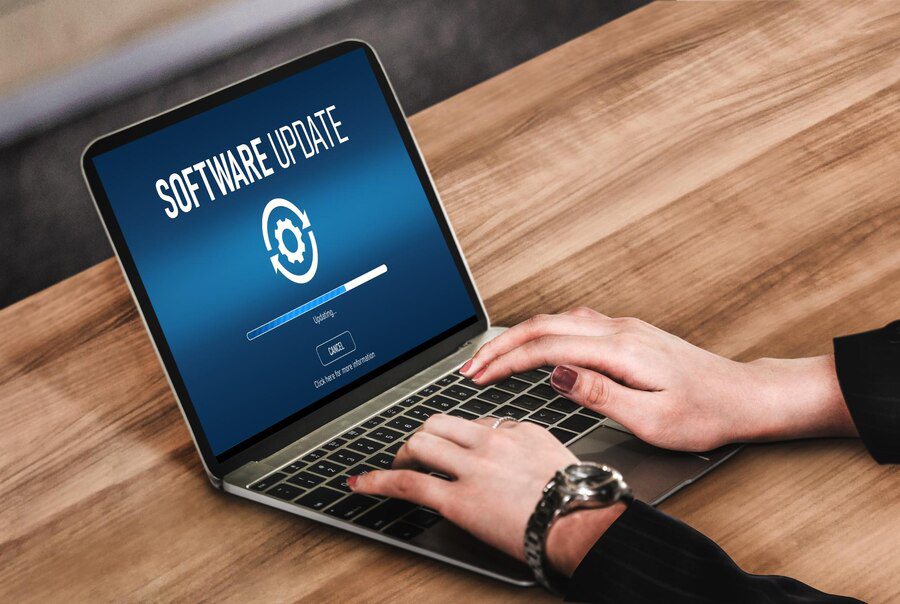Web Dev Security: Shield Your Site from Cyber Threats
In the digital age, where the internet serves as both a conduit for innovation and a battleground for cyber threats, safeguarding online assets has become paramount. Security Best Practices for Web Developers: Protecting Your
Website from Cyber Threats" emerges as an indispensable guide in navigating the treacherous waters of cyberspace. With the exponential growth of web applications and the ever-evolving landscape of cyber threats, developers are tasked with the critical responsibility of fortifying their creations against malicious actors. This comprehensive resource delves deep into the arsenal of security measures, equipping developers with the knowledge and tools necessary to erect robust defenses around their websites. From understanding the anatomy of common cyber attacks to implementing encryption protocols and authentication mechanisms, this guide serves as a beacon of enlightenment amidst the murky depths of cybersecurity. By adhering to these best practices, developers can shield their websites from an array of threats, ensuring not only the integrity and confidentiality of data but also the trust and confidence of users in an increasingly interconnected digital ecosystem.
Understanding Common Vulnerabilities: Identifying Weaknesses in Web Development
It's crucial for web developers to comprehend common vulnerabilities that can compromise their websites. These vulnerabilities include but aren't limited to SQL injection, cross-site scripting (XSS), and insecure direct object references. By understanding these weaknesses, developers can proactively implement measures to mitigate risks. Regular security audits and testing tools can help identify vulnerabilities in code and configurations. Additionally, staying informed about emerging threats and best practices in the cybersecurity landscape is essential for maintaining a robust defense posture.

Implementing Robust Authentication Systems: Safeguarding User Credentials
Robust authentication mechanisms are fundamental in protecting user credentials and preventing unauthorized access. Developers should implement multi-factor authentication (MFA) whenever possible to add an extra layer of security. Additionally, passwords should be securely hashed and stored using industry-standard encryption algorithms. Regular password policies, such as requiring strong passwords and enforcing periodic password changes, further enhance security. Continuous monitoring of authentication logs can help detect and respond to suspicious login attempts, such as brute-force attacks or credential stuffing.
Securing Data Transmission: Encryption and HTTPS Implementation
Securing data transmission is critical to prevent unauthorized access to sensitive information while it's in transit between the client and the server. Implementing encryption protocols such as SSL/TLS ensures that data exchanged between the user's browser and the web server remains confidential and integral. Utilizing HTTPS (Hypertext Transfer Protocol Secure) encrypts data packets, making it significantly harder for attackers to intercept or tamper with the information. Moreover, deploying SSL certificates from trusted certificate authorities (CAs) assures users that they are interacting with a legitimate and secure website. Regularly updating SSL certificates and configuring secure cipher suites further strengthens the encryption protocol.
Code Sanitization and Input Validation: Preventing Injection Attacks
Code sanitization and input validation are essential practices for preventing injection attacks, such as SQL injection and cross-site scripting (XSS). Developers should sanitize user inputs to remove or escape potentially malicious characters that could exploit vulnerabilities in the application. Input validation ensures that data entered by users adheres to expected formats and constraints, reducing the risk of injection attacks. Parameterized queries and prepared statements should be used in database interactions to prevent SQL injection attacks. Additionally, employing web application firewalls (WAFs) can provide an additional layer of defense by filtering and blocking malicious HTTP traffic.
Regular Software Updates: Patch Management for Enhanced Security
Regular software updates are crucial for maintaining the security and integrity of web applications. Developers should stay vigilant about security patches released by software vendors and promptly apply them to their systems. Patch management processes should be established to ensure that updates are systematically deployed across all components of the web infrastructure, including web servers, databases, and third-party libraries. Delayed or neglected updates can leave systems vulnerable to known exploits and attacks. Automated patch
management tools can streamline the update process and help mitigate the risk of human error. Additionally, conducting thorough testing after applying patches is essential to ensure that they do not introduce compatibility issues or unintended vulnerabilities.

Monitoring and Logging: Detecting and Responding to Suspicious Activities
Effective monitoring and logging are essential components of a robust cybersecurity strategy. By continuously monitoring system activities and maintaining detailed logs, web developers can swiftly detect and respond to suspicious behavior that may indicate a security breach.
- Proactive Monitoring: Implement real-time monitoring tools to track network traffic, system logs, and user activities. Set up alerts for unusual patterns or unauthorized access attempts to enable prompt intervention.
- Incident Response: Establish predefined procedures for responding to security incidents, including containment, investigation, and recovery steps. Ensure that designated personnel are trained to execute these procedures efficiently.
- Post-Incident Analysis: Conduct thorough post-incident analysis to identify the root cause of security breaches and vulnerabilities. Use this information to improve security measures and prevent future incidents.
By prioritizing monitoring and logging practices, web developers can enhance their ability to detect and respond to cyber threats effectively, minimizing the impact of security incidents on their websites and systems.
Backup and Disaster Recovery Planning: Ensuring Business Continuity Amid Cyber Attacks
Backup and disaster recovery planning are critical aspects of cybersecurity that help organizations maintain business continuity in the face of cyber attacks, natural disasters, or system failures. By regularly backing up data and implementing robust recovery strategies, web developers can minimize downtime and data loss.
- Regular Backups: Establish scheduled backups of critical data and system configurations to secure off-site locations or cloud storage. Ensure that backups are performed regularly and tested for reliability.
- Disaster Recovery Plans: Develop comprehensive disaster recovery plans outlining procedures for restoring systems and data in the event of a cyber attack or unexpected outage. Assign roles and responsibilities to key personnel to facilitate a swift response.
- Testing and Validation: Regularly test backup and recovery processes to verify their effectiveness and identify any potential gaps or weaknesses. Adjust plans as necessary based on testing outcomes and evolving security threats.
By investing in backup and disaster recovery planning, web developers can safeguard their organizations against data loss and downtime caused by cyber attacks or other unforeseen events, ensuring uninterrupted business operations and preserving customer trust.
Conclusion
Safeguarding your website against cyber threats is not just an option but a necessity in today's digital landscape. By implementing robust security measures, such as encryption protocols, regular security audits, and employee training, you can significantly reduce the risk of data breaches, hacking attempts, and other malicious activities. Remember, the cost of neglecting web development security can be severe, ranging from financial losses to reputational damage. Prioritize security from the outset to protect your business and your customers' sensitive information.
For more information on fortifying your website's defenses against cyber threats or to discuss tailored security solutions for your specific needs, reach out to Ideation Digital Marketing in Charleston, WV. Our team of experts is dedicated to helping businesses like yours navigate the complex landscape of web development security. Contact us today at (304) 814-2445 to schedule a consultation and take proactive steps towards a safer online presence.












